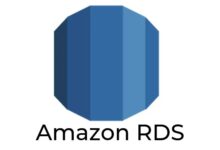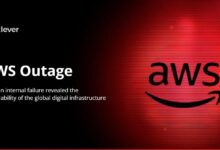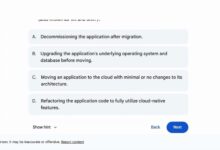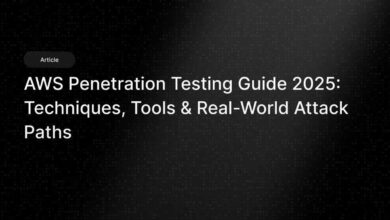AWS RDS: 7 Powerful Benefits You Can’t Ignore
Looking to simplify database management in the cloud? AWS RDS is your ultimate solution. With automated backups, scaling, and high availability, it’s never been easier to run relational databases at scale—without the headache.
What Is AWS RDS and Why It Matters

Amazon Web Services (AWS) Relational Database Service, commonly known as AWS RDS, is a managed service that makes it easy to set up, operate, and scale relational databases in the cloud. Instead of worrying about hardware provisioning, software patching, or backups, developers and IT teams can focus on building applications while AWS handles the heavy lifting.
AWS RDS supports multiple popular database engines, including MySQL, PostgreSQL, Oracle, SQL Server, MariaDB, and Amazon Aurora. This flexibility allows businesses to choose the best fit for their application needs without being locked into a single vendor. Whether you’re running a small web app or a large enterprise system, AWS RDS adapts to your workload.
Core Features of AWS RDS
At its heart, AWS RDS provides several key features that differentiate it from self-managed databases. These include automated backups, point-in-time recovery, automated software patching, and easy scaling of compute and storage resources. You can also enable encryption at rest and in transit to meet compliance requirements.
- Automated backups with retention up to 35 days
- Multi-AZ deployments for high availability
- Read replicas for improved read performance
These features reduce operational overhead significantly. For example, instead of manually scheduling nightly backups and verifying their integrity, AWS RDS does this automatically and stores them securely in Amazon S3.
How AWS RDS Compares to Traditional Databases
Running a traditional database on-premises requires a dedicated team to manage servers, apply security patches, monitor performance, and handle failover scenarios. In contrast, AWS RDS abstracts much of this complexity. You don’t need to worry about installing database software or replacing failed hardware.
“With AWS RDS, companies can reduce database administration costs by up to 70% compared to on-premises solutions.” — AWS Case Studies
This shift from infrastructure management to application innovation is one of the main reasons organizations are moving to managed database services. Additionally, AWS RDS integrates seamlessly with other AWS services like CloudWatch for monitoring, IAM for access control, and VPC for network isolation.
AWS RDS Database Engine Options
One of the biggest strengths of AWS RDS is its support for multiple database engines. Each engine has its own use cases, licensing models, and performance characteristics. Understanding these options helps you make an informed decision based on your technical and business requirements.
MySQL and MariaDB on AWS RDS
MySQL is one of the most widely used open-source relational databases, and AWS RDS makes it easy to deploy and manage. It’s ideal for web applications, content management systems, and e-commerce platforms. MariaDB, a community-developed fork of MySQL, is also supported and offers enhanced performance and additional storage engines.
Both databases benefit from AWS RDS features like automated backups, read replicas, and performance insights. They are cost-effective choices for startups and small to medium-sized businesses looking for reliability without high licensing fees.
- Supports GTID-based replication for easier failover
- Compatible with most MySQL tools and connectors
- Can be upgraded across major versions with minimal downtime
For more details, visit the official AWS MySQL page.
PostgreSQL on AWS RDS
PostgreSQL is known for its robustness, extensibility, and support for advanced data types like JSON, geospatial data, and full-text search. It’s a favorite among developers building complex applications that require more than just basic CRUD operations.
On AWS RDS, PostgreSQL benefits from automated patching, backup encryption, and integration with AWS Lambda for serverless computing. It also supports logical replication and Babelfish for Aurora PostgreSQL, which allows you to run SQL Server applications on PostgreSQL.
“PostgreSQL on RDS delivers enterprise-grade capabilities with the simplicity of a managed service.” — AWS Database Blog
Learn more at AWS PostgreSQL documentation.
Oracle and SQL Server on AWS RDS
For enterprises already using Oracle or Microsoft SQL Server, AWS RDS offers a seamless migration path to the cloud. These engines are fully supported with licensing options either through AWS or bring-your-own-license (BYOL).
Oracle on RDS supports features like Transparent Data Encryption (TDE), Real Application Clusters (RAC), and automated backups. SQL Server supports Always On availability groups, native backup encryption, and integration with Active Directory.
- Supports mixed-mode authentication for SQL Server
- Enables cross-region read replicas for disaster recovery
- Provides option groups for engine-specific configurations
However, licensing costs can be higher compared to open-source engines, so careful planning is required. More information is available at AWS Oracle RDS and AWS SQL Server RDS.
Amazon Aurora: The Next-Gen AWS RDS Option
Amazon Aurora is a MySQL- and PostgreSQL-compatible relational database built for the cloud. It combines the performance and availability of high-end commercial databases with the simplicity and cost-effectiveness of open-source databases.
Aurora is designed to be up to five times faster than standard MySQL and three times faster than PostgreSQL. It automatically scales storage up to 128 TiB per cluster volume and replicates data across six storage nodes in three Availability Zones for fault tolerance.
Key Advantages of Aurora Over Standard AWS RDS
While Aurora is technically part of the AWS RDS family, it offers several enhancements over standard RDS instances. These include faster failover, higher IOPS, and better scalability. Aurora Serverless is particularly useful for applications with unpredictable workloads, as it automatically starts, stops, and scales capacity based on demand.
- Self-healing storage with continuous backup to S3
- Up to 15 read replicas with sub-10ms replication lag
- Global Database feature for cross-region replication with less than 1 second lag
Because Aurora is tightly integrated with AWS infrastructure, it also offers better monitoring and diagnostics through Performance Insights and Enhanced Monitoring.
Aurora Serverless: When to Use It
Aurora Serverless v2 allows you to run database workloads without managing database instances. It’s perfect for development and testing environments, seasonal applications, or microservices with variable traffic.
Instead of provisioning a fixed instance size, Aurora Serverless adjusts capacity in real time. You only pay for the resources you consume, which can lead to significant cost savings during low-traffic periods.
“Aurora Serverless eliminates the need to over-provision database capacity, making it ideal for startups and agile teams.” — AWS Compute Blog
It’s important to note that while Aurora Serverless offers flexibility, it may not be suitable for workloads requiring consistent high performance or strict latency requirements. For more details, check out Aurora Serverless documentation.
Setting Up Your First AWS RDS Instance
Getting started with AWS RDS is straightforward, even for beginners. The AWS Management Console provides a step-by-step wizard to guide you through the creation process. Alternatively, you can use AWS CLI or Infrastructure as Code tools like AWS CloudFormation or Terraform for automation.
Step-by-Step Guide to Launching an RDS Instance
To create your first RDS instance, log in to the AWS Console and navigate to the RDS dashboard. Click “Create database” and choose between a standard create or a quick launch option.
Select your preferred engine (e.g., MySQL, PostgreSQL), version, and template (dev/test or production). Then configure the instance settings, including DB instance identifier, instance class, storage type, and allocated storage.
- Choose a unique DB instance identifier
- Select an appropriate instance class (e.g., db.t3.micro for testing)
- Enable automatic backups and set retention period
Next, set the master username and password, and configure the VPC and security group to control network access. Finally, review your settings and click “Create database”.
Best Practices for Initial Configuration
When setting up your RDS instance, follow these best practices to ensure security, performance, and reliability:
- Use IAM roles for database authentication when possible
- Enable encryption at rest using AWS KMS
- Place the instance in a private subnet within a VPC
- Configure a security group to allow only necessary IP ranges or services
Also, consider enabling Performance Insights and Enhanced Monitoring from the start to gain visibility into database performance. For detailed instructions, refer to the AWS RDS Setup Guide.
Scaling and Performance Optimization in AWS RDS
As your application grows, so will your database workload. AWS RDS provides several mechanisms to scale your database and maintain optimal performance under increasing load.
Vertical vs. Horizontal Scaling Options
Vertical scaling (scaling up) involves increasing the compute and memory resources of your RDS instance. For example, you can upgrade from a db.t3.small to a db.r5.large instance to handle more queries per second.
This process can be done with minimal downtime by modifying the instance and rebooting during a maintenance window. However, vertical scaling has limits based on the maximum instance size available.
Horizontal scaling, on the other hand, involves distributing the load across multiple database instances. In AWS RDS, this is achieved using read replicas. You can create up to five read replicas for MySQL, PostgreSQL, and MariaDB, and up to 15 for Amazon Aurora.
- Read replicas offload read traffic from the primary instance
- They can be promoted to standalone instances if needed
- Support cross-region replication for global applications
For more on scaling, see AWS RDS Scaling Features.
Using Performance Insights to Monitor Workload
Performance Insights is a powerful tool included with AWS RDS that helps you identify the SQL queries consuming the most database resources. It provides a dashboard showing CPU utilization, wait events, and top SQL statements.
By analyzing this data, you can pinpoint slow queries, optimize indexes, and improve overall database efficiency. It’s especially useful for troubleshooting performance bottlenecks in production environments.
“Performance Insights reduced query response time by 40% in a recent customer migration.” — AWS Customer Success Story
To enable it, go to your RDS instance settings and turn on Performance Insights. You can also set up alarms in CloudWatch to get notified of performance issues.
Backup, Recovery, and High Availability in AWS RDS
Data durability and availability are critical for any production database. AWS RDS offers robust mechanisms to protect your data and ensure minimal downtime during failures.
Automated Backups and Point-in-Time Recovery
AWS RDS automatically performs daily full backups and transaction log backups every five minutes. These backups are stored in Amazon S3 and can be retained for up to 35 days.
Point-in-time recovery allows you to restore your database to any second within the backup retention period. This is invaluable for recovering from accidental data deletion or application errors.
- Backups occur during the defined backup window
- Storage for backups is charged separately
- You can disable automated backups if not needed (not recommended for production)
For more, visit AWS Automated Backups Guide.
Multi-AZ Deployments for Fault Tolerance
Multi-AZ (Availability Zone) deployments provide high availability by automatically replicating your primary database to a standby instance in a different Availability Zone.
In the event of a failure—such as an instance crash, storage failure, or AZ outage—AWS RDS automatically fails over to the standby with minimal downtime (typically 60–120 seconds). This process is transparent to applications using the database endpoint.
Multi-AZ is recommended for all production workloads. While it increases cost due to the additional instance, the trade-off in reliability is well worth it.
“Multi-AZ deployments reduce unplanned downtime by over 90% compared to single-AZ setups.” — AWS Reliability Whitepaper
Security and Compliance in AWS RDS
Security is a top priority when managing databases in the cloud. AWS RDS provides multiple layers of protection to secure your data and meet regulatory requirements.
Network Security and Encryption
By default, AWS RDS instances are not publicly accessible. They should be deployed within a Virtual Private Cloud (VPC) and placed in private subnets. Access is controlled via security groups, which act as firewalls allowing only specific ports and IP ranges.
All data at rest is encrypted using AWS Key Management Service (KMS). You can also enable SSL/TLS for data in transit to prevent eavesdropping. Once encryption is enabled, it cannot be disabled, so plan accordingly.
- Use VPC endpoints to avoid data transfer over the public internet
- Rotate SSL certificates periodically
- Enable audit logging for database activity
For compliance, AWS RDS supports standards like HIPAA, GDPR, PCI DSS, and SOC.
IAM Integration and Authentication
AWS Identity and Access Management (IAM) can be used to manage access to RDS resources. While IAM doesn’t directly authenticate database users, it can generate temporary tokens for database login using IAM database authentication.
This feature is supported for MySQL and PostgreSQL and eliminates the need to manage long-term database passwords. It also integrates with AWS Single Sign-On (SSO) for centralized user management.
For more on security, see AWS RDS Security Overview.
Cost Management and Pricing Models for AWS RDS
Understanding AWS RDS pricing is essential for budgeting and optimizing cloud spend. Costs depend on several factors, including instance type, storage, I/O operations, backups, and data transfer.
Understanding RDS Pricing Components
The main cost components of AWS RDS are:
- Instance hours (based on instance class and region)
- Storage (general purpose SSD or provisioned IOPS)
- I/O requests (for provisioned IOPS storage)
- Backup storage (beyond the free tier)
- Data transfer out to the internet
You can choose between On-Demand, Reserved Instances, or Savings Plans. Reserved Instances offer significant discounts (up to 75%) if you commit to one- or three-year terms.
For example, a db.m5.large instance in us-east-1 costs around $0.279 per hour on-demand, but drops to $0.156 per hour with a 3-year Reserved Instance.
Ways to Reduce AWS RDS Costs
To optimize costs, consider the following strategies:
- Use smaller instance types for dev/test environments
- Delete unused snapshots and disable unnecessary backups
- Use Aurora Serverless for variable workloads
- Monitor usage with AWS Cost Explorer and set up billing alerts
Also, consider using the AWS Free Tier, which includes 750 hours of a db.t3.micro instance per month for the first 12 months.
For detailed pricing, visit AWS RDS Pricing Page.
What is AWS RDS used for?
AWS RDS is used to run and manage relational databases in the cloud. It simplifies common administrative tasks like provisioning, patching, backup, recovery, and scaling, making it ideal for web applications, enterprise systems, and cloud-native apps.
Which database engines does AWS RDS support?
AWS RDS supports six major database engines: Amazon Aurora, MySQL, PostgreSQL, Oracle, SQL Server, and MariaDB. Each engine has specific versions and configurations available.
Is AWS RDS secure?
Yes, AWS RDS is secure. It offers encryption at rest and in transit, network isolation via VPC, IAM integration, and compliance with major regulatory standards like HIPAA, GDPR, and PCI DSS.
How does AWS RDS ensure high availability?
AWS RDS ensures high availability through Multi-AZ deployments, where a standby replica is maintained in a different Availability Zone. In case of failure, automatic failover occurs with minimal downtime.
Can I scale my AWS RDS database?
Yes, you can scale AWS RDS both vertically (by changing instance size) and horizontally (using read replicas). Amazon Aurora also supports auto-scaling with Aurora Serverless.
In conclusion, AWS RDS is a powerful, flexible, and secure managed database service that simplifies relational database management in the cloud. Whether you’re running a simple app or a complex enterprise system, AWS RDS offers the tools, scalability, and reliability you need. From automated backups to high availability and cost-effective scaling, it empowers teams to focus on innovation rather than infrastructure. By leveraging its full capabilities—from Aurora to Performance Insights and Multi-AZ deployments—you can build resilient, high-performing applications that grow with your business.
Recommended for you 👇
Further Reading:









